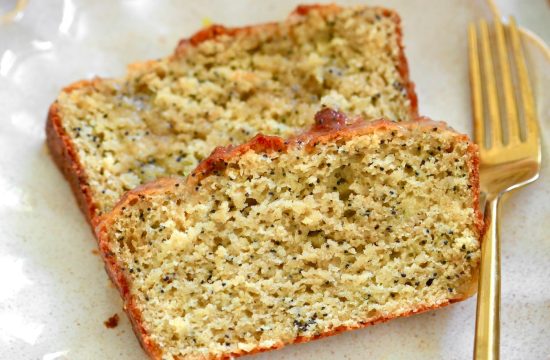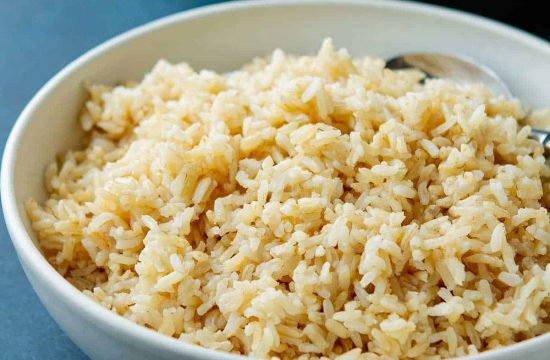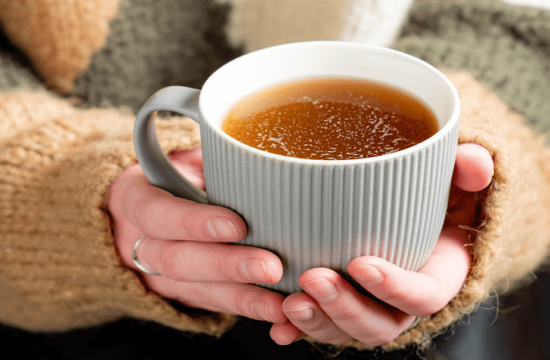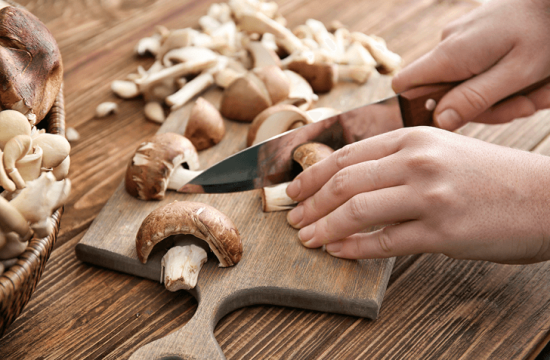The 5th chapter of Nidanasthanam of Ashtanga Hridayam is named as Rajayaksmadi Nidanam Adhyayah. This chapter deals with the explanation of ‘diagnosis of pulmonary tuberculosis etc diseases’.
The topics covered in this chapter include –
– Definition of Rajayakshma
– Mythology and meaning of Rajayakshma and sosa
– Causes, pathogenesis, premonitory symptoms, symptoms and complications of Rajayakshma
– Dosha symptoms of Rajayakshma
– Prognosis of Rajayakshma
– Diagnosis of hoarseness of voice
– Symptoms of vataja, pittaja, kaphaja, sannipataja, kshayaja and medaja types of hoarseness of voice
– Diagnosis and symptoms of anorexia
– Diagnosis, premonitory symptoms and symptoms of vataja, pittaja, kaphaja, tridoshaja, and manasika types of vomiting
– Diagnosis of Hridroga – heart disorders
– Symptoms of Vataja, pittaja, kaphaja, tridoshaja and krimija types of heart disorders
– Diagnosis and pathogenesis of trishna – thirst disorder
– Symptoms of vataja, pittaja, kaphaja, sannipataja, amaja and rasa kshayaja types of thirst
– Upasargaja trishna – thirst caused by other disorders
Pledge by the author(s)
अथातो राजयक्ष्मादिनिदानं व्याख्यास्याम: ।
इति ह स्महुरात्रेयादयो महर्षय: ।
After having offered prayers to the God, henceforth we are going to explain the chapter pertaining to the explanation of ‘diagnosis of pulmonary tuberculosis etc’. Thus say (pledge) atreya and other sages.
Nirvachana (Definition)
अनेकरोगानुगतो बहुरोगपुरोगमः ।
राजयक्ष्मा क्षयः शोषो रोगराडिति च स्मृतः ॥ १ ॥
Follower of many diseases and leader of many others,Rajayakshman is known also as Kshaya, Shosha and Rogarat.
Mythology and meaning of Rajayakshma and Shosha
नक्षत्राणां द्विजानां च राज्ञोऽभूद्यदयं पुरा ।
यच्च राजा च यक्ष्मा च राजयक्ष्मा ततो मतः ॥ २ ॥
देहौषधक्षयकृतेः क्षयस्तत्सम्भवाच्च सः ।
रसादिशोषणाच्छोषो रोगराट् तेषु राजनात् ॥ ३ ॥
Since it affected the king of the stars (the moon) and the twice born (Brahmanas) long back (in the previous aeon) and since it is the king of Yakshmas (disease syndromes) it is called Rajayakshma. Because it leads to loss/depletion of the body and of medicines (because) of its persistence for long time in the body) and also because it is the cause of many disease (which cause depletion of the body and medicines) it is called Kshaya. It is Shosha, because it produces depletion (drying up, diminution or loss) of Rasa and others (Dhatus/tissues) and Rogarat – king of disease – since it reigns (overpowers, subdues, controls) over them.
Nidana (causes)
साहसं वेगसंरोधः शुक्रौजःस्नेहसङ्क्षयः ।
अन्नपानविधित्यागश्चत्वारस्तस्य हेतवः ॥ ४ ॥
Exertion, suppression of the urges (of urine, feces, flatus etc.) loss of Shukra, (semen), ojas, (essence of the tissues) and Sneha (unctuousness, lubricating material of the tissues) and avoidance of proper regimen of food and drink – these four are its causes.
Samprapti (pathogenesis)
तैरुदीर्णोऽनिलः पित्तं कफं चोदीर्य सर्वतः ।
शरीरसन्धीनाविश्य तान् सिराश्च प्रपीडयन् ॥ ५ ॥
मुखानि स्रोतसां रुद्ध्वा तथैवातिविवृत्य वा ।
सर्पन्नूर्ध्वमधस्तिर्यग्यथास्वं जनयेद्गदान् ॥ ६ ॥
Aggravated by these (causes), Anila (Vata) produces increase of both Pitta and Kapha, spreads to and compresses all the joints of the body and the Siras (veins and other channels of Rasa), ramified upwards, downwards, and sidewards, either obstructing (constriction) or greatly dilating their mouth (lumen) and gives rise to the disease.
Purvarupa (premonitory symptoms)
रूपं भविष्यतस्तस्य प्रतिश्यायो भृशं क्षवः ।
प्रसेको मुखमाधुर्यं सदनं वह्निदेहयोः ॥ ७ ॥
स्थाल्यमत्रान्नपानादौ शुचावप्यशुचीक्षणम् ।
मक्षिकातृणकेशादिपातः प्रायोऽन्नपानयोः ॥ ८ ॥
हृल्लासश्छर्दिररुचिरश्नतोऽपि बलक्षयः ।
पाण्योरवेक्षा पादास्यशोफोऽक्ष्णोरतिशुक्लता ॥ ९ ॥
बाह्वोः प्रमाणजिज्ञासा काये बैभत्स्यदर्शनम् ।
स्त्रीमद्यमांसप्रियता घृणित्वं मूर्धगुण्ठनम् ॥ १० ॥
नखकेशातिवृद्धिश्च स्वप्ने चाभिभवो भवेत् ।
पतङ्गकृकलासाहिकपिश्वापदपक्षिभिः ॥ ११ ॥
केशास्थितुषभस्मादिराशौ समधिरोहणम् ।
शून्यानां ग्रामदेशानां दर्शनं शुष्यतोऽम्भसो ॥ १२ ॥
ज्योतिर्गिरीणां पततां ज्वलतां च महीरुहाम् ।
Its premonitory symptoms are – nasal catarrh, too many sneezes, excess salivation, sweet taste in the mouth, weakness of (digestive) fire and the body, seeing uncleanliness (dirt etc.) in the vessels (of food), foods and drinks etc. Even though they are actually clean; seeing flies, grass, hairs etc. as though present in the foods and drinks (though not actually present); oppression in the chest (nausea), vomiting, loss of taste, (and appetite), loss of strength in spite of eating (sufficient quantity), inspecting his own hands intently, swelling of the feet and face, too much of white color of the eyes, arguing about the size (thickness) of the arms (doubting its emaciation), presuming a disgusting look of his own body (though not actually so), desire for women (sex), wine and meat; miserliness, covering the head (always with clothes), excess (rate of) growth of the nails and hairs; dreaming of getting defeated by butterflies, chameleon, snake, monkey, dog and birds; climbing on heaps of hairs, bones, husk, ash etc., seeing deserted villages, empty places and dry reservoirs of water, falling of stars and mountains, and burning of trees.
Rupa (Clinical features)
पीनसश्वासकासांसमूर्धस्वररुजोऽरुचिः ॥ १३ ॥
ऊर्ध्वं विड्भ्रंशसंशोषावधश्छर्दिश्च कोष्ठगे ।
तिर्यक्स्थे पार्श्वरुग्दोषे सन्धिगे भवति ज्वरः ॥ १४ ॥
रूपाण्येकादशैतानि जायन्ते राजयक्ष्मिणः ।
Nasal catarrh, dyspnea, cough, pain in the shoulders and head, change of voice, loss of taste (and appetite) are the upward symptoms (appearing when the Doshas are localized in the upper parts of the body); either more elimination of feaces or constipation are the downwards (when the Doshas are localized in the lower parts); vomiting when the Doshas are in the alimentary tract; pain in the flanks when the Doshas are localized sideward; fever when localized in the joints these eleven form the characteristic features of Rajayakshman.
Upadrava (secondary diseases)
तेषामुपद्रवान् विद्यात्कण्ठोद्ध्वंस उरोरुजम् ॥ १५ ॥
जृम्भाङ्गमर्दनिष्ठीववह्निसादास्यपूतिताः ।
Their Upadrava (secondary affections, complications) are – abnormalities of the throat, pain in the chest, too much of yawning, body ache, expectoration of sputum, weakness of digestive activity, and bad smell of the mouth.
Dosha symptoms in Rajayaksma
तत्र वाताच्छिर: पार्श्वशूलमंसाङ्गमर्दनम् ॥ १६ ॥
कण्ठोद्ध्वंसः स्वरभ्रंशः पित्तात् पादांसपाणिषु ।
दाहोऽतीसारोऽसृक्छर्दिर्मुखगन्धो ज्वरो मदः ॥ १७ ॥
कफादरोचकश्छर्दिः कासो मूर्धाङ्गगौरवम् ।
प्रसेकः पीनसः श्वासः स्वरसादोऽल्पवह्निता ॥ १८ ॥
From Vata (are produced) pain in the head and flanks, aches in the shoulders and body, abnormalities of the throat and hoarseness; from Pitta (are produced) burning sensation in the soles, shoulders and palms, diarrhea, vomiting of blood, bad smell in the mouth, fever and toxicity; from Kapha (are produced) loss of taste (and appetite), vomiting, cough, feeling of heaviness of the head and body, excess of salivation, nasal catarrh, dyspnoea, weakness of voice and poor digestive activity.
Dosha symptoms in Rajayaksma
दोषैर्मन्दानलत्वेन सोपलेपैः कफोल्बणैः ।
स्रोतोमुखेषु रुद्धेषु धातूष्मस्वल्पकेषु च ॥ १९ ॥
विदह्यमानः स्वस्थाने रसस्तांस्तान् उपद्रवान् ।
कुर्यादगच्चन्मांसादीनसृक् चोर्ध्वं प्रधावति ॥ २० ॥
पच्यते कोष्ठ एवान्नमन्नपक्त्रैव चास्य यत् ।
प्रायोऽस्मान् मलतां यातं नैवालं धातुपुष्टये ॥ २१ ॥
रसोऽप्यस्य न रक्ताय मांसाय कुत एव तु ।
उपस्तब्धः स शकृता केवलं वर्तते क्षयी ॥ २२ ॥
The Doshas, among which Kapha is predominant, produce weakness of the digestive fire, because the mouths of the channels (lumen of the channel of Rasa) are coated and so are obstructed; the fire in the tissues (metabolic heat) being poor, the Rasa undergoes improper cooking and remaining in its own place produces the various complications. Without leading to the formation of the Mamsa (muscle and other tissues) etc. it makes for upward movement of Rakta (blood coming out along with sputum). That which is responsible for digestion of food (and bifurcation of the digested food into essence and waste), such a digestive fire located in the alimentary tract probably produces more waste (feces) from the food (in comparison to the tissues) and less nourishment of dhatus (other tissues).
(The food not getting digested properly by the digestive fire in the alimentary tract gives rise to more of wastes and less for the nourishment of the Dhatus i.e. other tissues)
When Rasa (essence, nutrient portion) is insufficient for Rakta (blood, the sound Dhatu) itself, where is it for Mamsa (muscle, the third Dhatu); the patient of Ksaya is sustained by strength of the feaces only.
Sadhyasadhyata (prognosis)
लिङ्गेष्वल्पेष्वपि क्षीणं व्याध्यौषधबलाक्षमम् ।
वर्जयेत्साधयेदेव सर्वेष्वपि ततोऽन्यथा ॥ २३ ॥
Though the symptoms are few and mild, if the patient is emaciated and unable to withstand the strength of the disease and the therapies, such a patient should not be treated. The patient who is otherwise (not emaciated and capable of withstanding the strength of the disease and the therapies) should be treated though having all the symptoms. Henceforth diagnosis of hoarseness of voice shall be explained.
Svarabheda Nidana (diagnosis of hoarseness of voice)
दोषैर्व्यस्तैः समस्तैश्च क्षयात् षष्ठश्च मेदसा ।
स्वरभेदो भवेत्
Svarabheda – hoarseness of voice – arises from each of the Doshas separately, from all of them together, from Kshaya (Rajayakshma – consumption) and sixth from Medas (fat/ obesity).
Rupa (clinical features)
Vataja
तत्र क्षामो रूक्षश्चलः स्वरः ॥ २४ ॥
शूकपूर्णाभकण्ठत्वं स्निग्धोष्णोपशयोऽनिलात् ।
That in which the voice is feeble, dry (unpleasant, harsh) and unsteady feeling as though the throat is full of thorns, the patient finding comfort with fatty (unctuous) and hot things – is of Vata origin.
Pittaja
पित्तात्तालुगले दाहः शोष उक्तावसूयनम् ॥ २५ ॥
Feeling of burning sensation and dryness in the palate and throat, and inability to speak – is of Pitta origin.
Kaphaja, tridoshaja, kshayaja and medaja types of hoarseness of voice
लिम्पन्निव कफात्कण्ठं मन्दः खुरखुरायते ।
स्वरो विबद्धः सर्वैस्तु सर्वलिङ्गः क्षयात्कषेत् ॥ २६ ॥
धूमायतीव चात्यर्थं मेदसा श्लेष्मलक्षणः ।
कृच्छ्रलक्ष्याक्षरश्चात्र सर्वैरन्त्यं च वर्जयेत् ॥ २७ ॥
Feeling of coating of the throat, voice is slow, husky and obstructed – is of Kapha origin. In that caused by all the three doshas (tridosha origin) are present all the symptoms (enumerated above). Voice (speaking) is painful and associated with feeling of hot fumes coming out from the throat – is due to Ksaya (Rajayaksman). That caused by meda (fat) as symptoms of Kaphaja, the patient producing only some known words with difficulty – is due to Medas (increase of fat). Among these, that caused by all the Doshas and the last one (Medaja) should be refused treatment (as these are incurable).
Thus ends the diagnosis of Svarabheda (hoarseness).
Arochaka Nidana (diagnosis of anorexia)
अरोचको भवेद्दोषैर्जिह्वाहृदयसंश्रयैः ।
सन्निपातेन मनसः सन्तापेन च पञ्चमः ॥ २८ ॥
Arochaka – (loss of taste, loss of appetite, anorexia) arises from the Doshas (one from each Dosha separately) which are localized in the Jihva (tongue) and Hridaya (mind); one from all the Doshas together and the fifth from the affection of the mind.
Arochaka Lakshana (symptoms of anorexia)
कषायतिक्तमधुरं वातादिषु मुखं क्रमात् ।
सर्वोत्थे विरसं शोकक्रोधादिषु यथामलम् ॥ २९ ॥
The mouth has astringent, bitter and sweet tastes (in those produced) from Vata etc. (Pitta and Kapha) respectively; in that from all (Doshas together) there is unnatural taste (abnormal taste or even absence of taste); and in that due to (affection of the mind) by grief, anger etc. The taste will be, as related to the Mala (Dosha) involved.
Thus ends the diagnosis of Arochaka (anorexia)
Chardi Nidana (diagnosis of vomiting)
छर्दिर्दोषैः पृथक् सर्वैर्द्विष्टैरर्थैश्च पञ्चमी ।
उदानो विकृतो दोषान् सर्वास्वप्यूर्ध्वमस्यति ॥ ३० ॥
Chardi (vomiting) arises from each Dosha separately, from all of them together and the fifth from undesirable/disliked sense objects. Udana (division of Vata) which has become abnormal aggravates all the Doshas and makes them move upward.
Purvarupa (Premonitory symptoms)
तासूत्क्लेशास्यलावण्यप्रसेकारुचयोऽग्रगाः।
Nausea, salt taste in the mouth, more of salivation and loss of taste and appetite are the premonitory symptoms.
Rupa (clinical features)
Vataja
नाभिपृष्ठं रुजन् वायुः पार्श्वे चाहारम् उत्क्षिपेत् ॥ ३१ ॥
ततो विच्छिन्नमल्पाल्पं कषायं फेनिलं वमेत् ।
शब्दोद्गारयुतं कृष्णमच्छं कृच्छ्रेण वेगवत् ॥ ३२ ॥
कासास्यशोषहृन्मूर्धस्वरपीडाक्लमान्वितः ।
Vata produces vomiting of food, causing pain in the umbilicus, back and flanks; (vomiting is) interrupted, little, by little, astringent in taste; frothy material accompanied by sound and belching; black in color, thin in consistence, coming out with great difficulty and force associated with cough, dryness of the mouth, pain in the region of the heart and head, hoarseness and exhaustion.
Pittaja
पित्तात् क्षारोदकनिभं धूम्रं हरितपीतकम् ॥ ३३ ॥
सासृगम्लं कटूष्णं च तृण्मूर्छातापदाहवत् ।
From Pitta, the vomiting material resembles solution of ash, brown, green or yellow in color, mixed with blood; sour or bitter in taste, hot, accompanied with thirst, fainting, increased heat and burning sensation (of the body).
Kaphaja
कफात् स्निग्धं घनं शीतं श्लेष्मतन्तुगवाक्षितम् ॥३४॥
मधुरं लवणं भूरि प्रसक्तं लोमहर्षणम् ।
मुखश्वयथुमाधुर्यतन्द्राहृल्लासकासवान् ॥३५॥
From Kapha, the vomited material is unctuous, thick, cold with web of threads of Kapha; sweet or salt in taste, large in quantity; bouts are continuous, associated with horripilation, swelling of the face, sweetness, stupor, oppression in the chest (nausea) and cough.
Tridoshaja
सर्वलिङ्गा मलैः सर्वैरिष्टोक्ता या च तां त्यजेत् ।
That arising from all the Malas (Doshas) also, has all the symptoms appearing together and also those symptoms enumerated in the Rista chapter (fifth of Sarira Sthana). This, should be rejected.
Manasika
पूत्यमेध्याशुचिद्विष्टदर्शनश्रवणादिभिः ॥ ३६ ॥
तप्ते चित्ते हृदि क्लिष्टे छर्दिर्द्विष्टार्थयोगजा ।
Arises from seeing, hearing or other kinds of contact with things which are emitting foul smell, unpleasant and unclean (dirty, inauspicious) the mind gets disturbed and causes vomiting associated with pain in the region of the heart; this is called as vomiting due to contact with the disliked sensory objects.
Manasika
वातादीनेव विमृशेत् कृमितृणामदौर्हृदे ॥ ३७ ॥
शूलवेपथुहृल्लासैर्विशेषात् कृमिजां वदेत् ।
कृमिहृद्रोगलिङ्गैश्च
Vomiting due to worms (internal parasites), thirst, Ama (undigested material accumulation) and pregnancy should also be considered as produced from Vata, etc; that due to worms, especially by the appearances of pain in the abdomen; rigors, nausea and symptoms of heart diseases caused by worms. (to be described further).
Thus ends the diagnosis of Chardi (vomiting).
अथहृद्रोगनिदानम्
Hridroga Nidana (diagnosis of heart diseases)
स्मृताः पञ्च तु हृद्गदाः ॥ ३८ ॥
तेषां गुल्मनिदानोक्तैः समुत्थानैश्च सम्भवः ।
Henceforth the diagnosis of heart diseases (shall be explained) disease of the heart are said to be five (kinds). They arise from the causes enumerated in Gulma Nidana (chapter. 11).
Rupa (clinical features)
Vataja
वातेन शूल्यतेऽत्यर्थं तुद्यते स्फुटतीव च ॥ ३९ ॥
भिद्यते शुष्यति स्तब्धं हृदयं शून्यता द्रवः ।
अकस्माद्दीनता शोको भयं शब्दासहिष्णुता ॥ ४० ॥
वेपथुर्वेष्टनं मोहः श्वासरोधोऽल्पनिद्रता ।
In that due to Vata, there is severe pain such as pricking, piercing, bursting or splitting; drying up, steadiness (absence of movement), feeling of emptiness and increased rate of the heart; feeling of helplessness (incapacity to withstand the troubles), grief, and fear without (any other apparent) reason, inability to withstand noise; tremors and contractions of the body; delusion (coma), obstructed breathing and very little sleep.
Pittaja
पित्तात्तृष्णा भ्रमो मूर्छा दाहः स्वेदोऽम्लकः क्लमः ॥ ४१ ॥
छर्दनं चाम्लपित्तस्य धूमकः पीतता ज्वरः ।
In that due to Pitta, there is heat, thirst, dizziness, fainting, burning sensation, severe sweating, sourness (acidity), exhaustion, vomiting of sour Pitta (bile) or feeling of hot fumes coming up, yellowish appearance of the skin and fever.
Kaphaja
श्लेष्मणा हृदयं स्तब्धं भारिकं साश्मगर्भवत् ॥ ४२ ॥
कासाग्निसादनिष्ठीवनिद्रालस्यारुचिज्वराः ।
In that due to Shleshma (Kapha) the heart is static, heavy as though having a stone inside, is accompanied with cough, poor digestion, expectoration of sputum, more of sleep, lassitude, loss of taste and appetite and fever.
Tridoshaja
सर्वलिङ्गस्त्रिभिर्दोषैः
That due to all the three Doshas, will have all the symptoms.
Krimija
कृमिभिः श्यावनेत्रता ॥ ४३ ॥
तमःप्रवेशो हृल्लासः शोषः कण्डूः कफस्रुतिः ।
हृदयं प्रततं चात्र क्रकचेनेव दार्यते ॥ ४४ ॥
चिकित्सेदामयं घोरं तं शीघ्रं शीघ्रकारिणम् ।
That due to worms (intestinal parasites), will have black discoloration of the eyes, entering into darkness (fainting), oppression in the (region of the heart, dryness and irritation (of the skin), elimination of the sputum, patient feels that his heart is being continuously torn apart by a saw; treatment of this grave disease which is going to increase quickly should be commenced soon.
Thus ends the diagnosis of Hrdroga (heart disease).
अथ तृष्णानिदानम् – henceforth will be expounded the diagnosis of thirst
Trishna Nidana (diagnosis of thirst)
वातात्पित्तात्कफात्तृष्णा सन्निपाताद्रसक्षयात् ॥ ४५ ॥
षष्ठी स्यादुपसर्गाच्च
Trishna (thirst) arises from (aggravation of) Vata, Pitta, Kapha, Sannipata (combination of all the Doshas), Rasa Kshaya (depletion or loss of Rasa Dhatu (plasma) and the sixth form (effect of) other diseases.
Trishna samprapti (pathogenesis of thirst)
वातपित्ते तु कारणम् ।
सर्वासु तत्प्रकोपो हि सौम्यधातुप्रशोषणात् ॥ ४६ ॥
सर्वदेहभ्रमोत्कम्पतापतृड्दाहमोहकृत् ।
Vata and Pitta together (undergoing aggravation) are the causes (for all the types); such an aggravation is due to evaporation (depletion or loss of) Saumya Dhatu (tissues which are coolant and watery). It leads on to dizziness, increased tremors all over the body, feeling of increased heat, thirst, burning sensation and delusion.
Mechanism of manifestation of Trishna
जिह्वामूलगलक्लोमतालुतोयवहाः सिराः ॥ ४७ ॥
संशोष्य तृष्णा जायन्ते
Trishna (thirst) is produced due to dryness of the root of the tongue, throat, Kloma, palate and channels purveying water (caused by the Doshas).
Notes: Kloma is identified variously as trachea, right lung and pancreas, the last one (pancreas) being widely accepted.
Trishna lakshana – general features of thirst disease
तासां सामान्यलक्षणम् ।
मुखशोषो जलातृप्तिरन्नद्वेषः स्वरक्षयः ॥ ४८ ॥
कण्ठौष्ठजिह्वाकार्कश्यं जिह्वानिष्क्रमणं क्लमः ।
प्रलापश्चित्तविभ्रंशस्तृड्ग्रहोक्तास्तथामयाः ॥ ४९ ॥
Their general features are – dryness of the mouth, non-contentment by drinking water, aversion to food, feeble voice, roughness of the throat, lips and tongue, protrusion of the tongue, exhaustion, irrelevant talk, disorderliness of the mind and other diseases (symptoms) enumerated as arising from suppression of thirst (in chapter 4 of Sutrasthana).
Vataja
मारुतात्क्षामता दैन्यं शङ्खतोदः शिरोभ्रमः ।
गन्धाज्ञानास्यवैरस्यश्रुतिनिद्राबलक्षयाः ॥ ५० ॥
शीताम्बुपानाद्वृद्धिश्च
From Maruta (Vata) arise, emaciation of the body, (helplessness, pain in the temples, dizziness, loss of smell, bad taste in the mouth, more of tears in the eyes, loss of sleep and strength, thirst increasing by drinking cold water.
Pittaja
पित्तान् मूर्छास्यतिक्तता ।
रक्तेक्षणत्वं प्रततं शोषो दाहोऽतिधूमकः ॥ ५१ ॥
From Pitta arise, fainting, bitter taste in the mouth, red color in the eyes, constant dryness of the mouth, burning sensation and feeling of hot fumes coming out often.
Kaphaja
कफो रुणद्धि कुपितस्तोयवाहिषु मारुतम् ।
स्रोतःसु स कफस्तेन पङ्कवच्छोष्यते ततः ॥ ५२ ॥
शूकैरिवाचितः कण्ठो निद्रा मधुरवक्त्रता ।
आध्मानं शिरसो जाड्यं स्तैमित्यच्छर्द्यरोचकाः ॥ ५३ ॥
आलस्यमविपाकश्च
Kapha getting aggravated, obstructs Maruta (Vata) in the channels bearing water, then Kapha dries up like silt and gives rise to feeling of thorns filling the throat, (more of) sleep, sweet taste in the mouth, flatulence, dull pain in the head, lack of activity, vomiting, loss of taste and appetite, lassitude and indigestion.
Sannipataja
सर्वैः स्यात्सर्वलक्षणा ।
All the symptoms will appear from (the combination of) all the Doshas.
Amaja etc.
आमोद्भवा च भक्तस्य संरोधाद्वातपित्तजा ॥ ५४ ॥
उष्णक्लान्तस्य सहसा शीताम्भो भजतस्तृषम् ।
ऊष्मा रुद्धो गतः कोष्ठं यां कुर्यात्पित्तजैव सा ॥ ५५ ॥
या च पानातिपानोत्था तीक्ष्णाग्नेः स्नेहजा च या ।
स्निग्धगुर्वम्ललवणभोजनेन कफोद्भवा ॥ ५६ ॥
Amaja Trishna arises from Vatapitta, due to obstruction to food (fasting starvation, or inability to consume food due to any cause). Trishna occurs in the person who has become exhausted by exposure to heat (sunlight, fire etc.), taking bath in cold water immediately; by this the heat obstructed (from coming out) gets into the abdomen and causes thirst. It is born from (aggravation of) Pitta itself (so has the same symptoms as enumerated under Pittaja). So also, thirst is produced by too much of drinking of wines and the thirst produced by too much of eating of fatty foods, by persons who have very powerful digestive activity (both these are Pittaja only). Thirst produced by too much indulgence in foods which are unctuous (fatty), indigestible, sour and salt taste is caused by Kapha.
Thirst caused by loss of rasa tissue
तृष्णा रसक्षयोक्तेन लक्षणेन क्षयात्मिका|
Thirst produced by loss of Rasa (plasma) will have the symptoms enumerated under Rasaksaya (vide, chapter 11 of Sutrasthana).
Upasargaja Trishna – thirst caused by other diseases
शोषमेहज्वराद्यन्यदीर्घरोगोपसर्गतः ॥ ५७ ॥
या तृष्णा जायते तीव्रा सोपसर्गात्मिका स्मृता ॥ ५७ऊअब् ॥
Severe thirst produced as a result of long-standing diseases such as Sosa (consumption, tuberculosis), Meha (diabetes), Jvara (fevers) etc. is known as UpasargajaTrishna.
इति श्री वैद्यपति सिंहगुप्तसूनु श्रीमद्वाग्भटविरचितायामष्टाङ्गहृदयसंहिताया तृतीये निदानस्थाने राजयक्ष्मादिनिदानं नाम पञ्चमोऽध्याय: ।।१॥
Thus ends the chapter Rajayakshmadi Nidana – diagnosis of Rajayakshma etc. the fifth in Nidanasthana of Astangahridaya Samhita composed by Srimad Vagbhata, son of Sri Vaidyapati Simhagupta.















